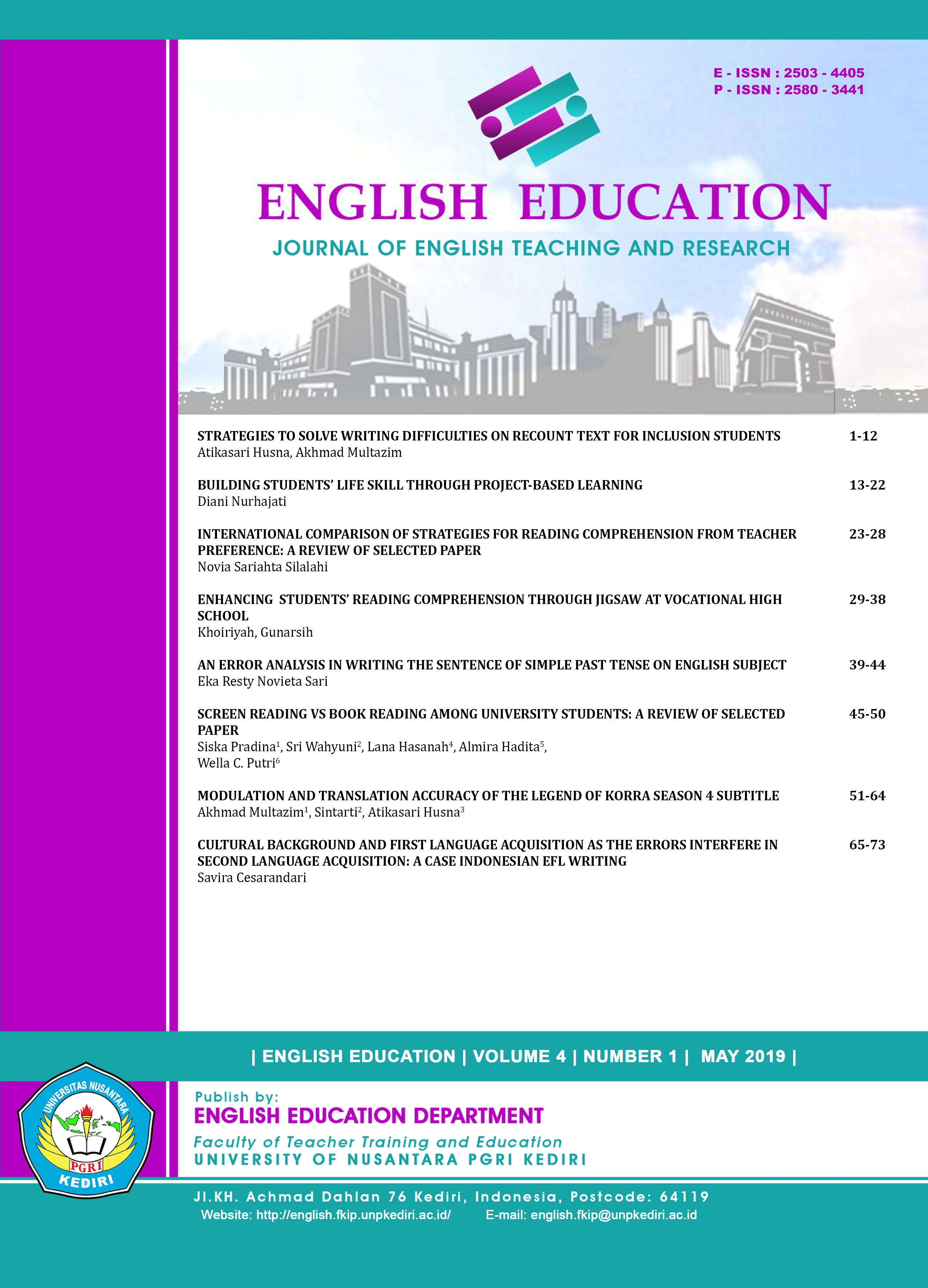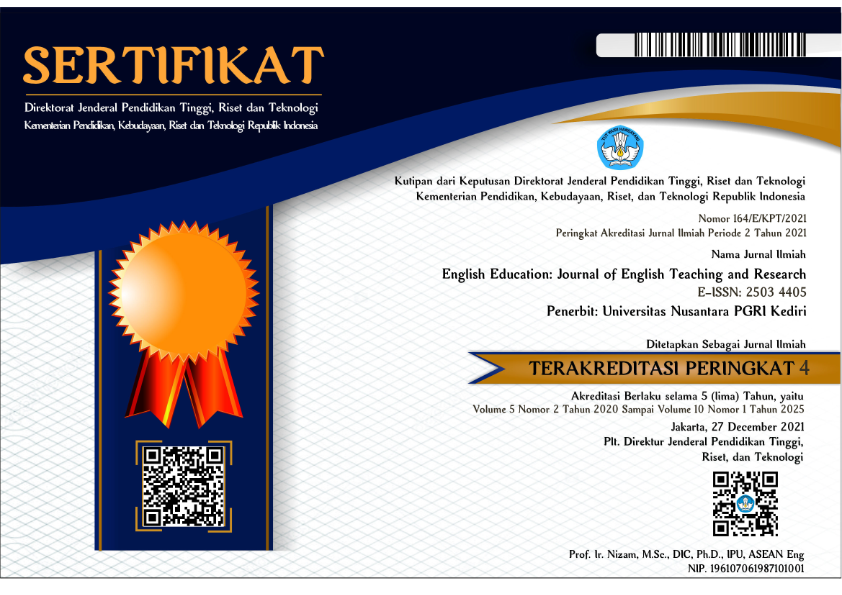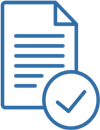MODULATION AND TRANSLATION ACCURACY OF THE LEGEND OF KORRA 4 SUBTITLE
DOI:
https://doi.org/10.29407/jetar.v4i1.12732Abstract
This research aims to find out the types of modulation procedure in the subtitle of the legend of Korra season 4 and describe the accuracy of the subtitle of the movie. This descriptive qualitative research applied total sampling technique consisting 78 data. The data are subtitles containing modulation procedure taken from English and Indonesian subtitle of the legend of Korra season 4 and its accuracy assessment. To collect the data, I transcribed subtitle and distributed questionnaire to raters to assess translation accuracy. I used Vinay dan Darbelnet’s theory of modulation procedure and Nababan’s theory of translation accuracy assessment.
The result of the research shows that there are 8 out of 10 types of modulation procedure; Abstract for Concrete (10 data), The Part for The Whole (6 data), One Part for Another (5 data), Reversal of Terms (14 data), Negation of Opposite (5 data), Active to Passive (29 data), Space For Time (4 data) and Exchange of Intervals For Limits (5 data). Active to Passive was the most dominant type used in the subtitle. Out of 78 data, 49 data (62,82%) are accurately transferred. It can be concluded that the subtitle of the legend of Korra season 4 is accurate.
Downloads
Downloads
Published
Issue
Section
License
Authors who publish with this journal agree to the following terms:
- Copyright on any article is retained by the author(s).
- The author grants the journal, the right of first publication with the work simultaneously licensed under a Creative Commons Attribution License that allows others to share the work with an acknowledgment of the work’s authorship and initial publication in this journal.
- Authors are able to enter into separate, additional contractual arrangements for the non-exclusive distribution of the journal’s published version of the work (e.g., post it to an institutional repository or publish it in a book), with an acknowledgment of its initial publication in this journal.
- Authors are permitted and encouraged to post their work online (e.g., in institutional repositories or on their website) prior to and during the submission process, as it can lead to productive exchanges, as well as earlier and greater citation of published work.
- The article and any associated published material is distributed under the Creative Commons Attribution-ShareAlike 4.0 International License








 Article template
Article template



